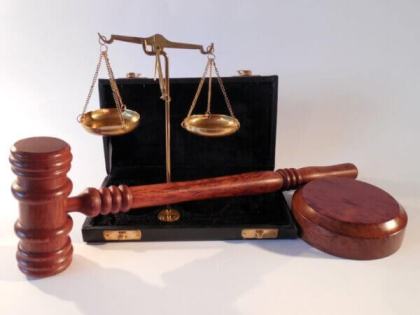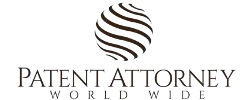Patent Infringement
Patent infringement occurs when someone without the patent owner’s permission makes, uses, sells, or imports a product or process that falls within the scope of the granted patent’s claims. It is a violation of the patent owner’s exclusive rights and can lead to legal consequences and remedies.
Table of Contents

When someone takes actions that infringe on the right of the patentee then it would be called patent infringement. Such infringing actions would be:
- the unauthorized making
- using
- offering for sale or
- selling any patented invention within the United Kingdom (U.K.) Territories or
- importing into the United Kingdom (U.K.) of any patented invention during the term of the patent.
Anyone who actively induces someone else to infringe the patent is also liable as an infringer.
The patent infringement can easily happen since all the patent information is available to public. any one can copy and start making, selling such patented product or service, however performing above mentioned actions with the patented invention without the permission of patent owner is an illegal practice.
Willful patent infringement and unintentional patent infringement
Unintentional patent infringement can happen when you have no intention to infringe on someone else’s patent but your actions do exactly that. for examples you introduce your product in the market not knowing it would be infringing on someone else’s patent.
on the other hand, willful patent infringement is when someone (or a business) ignores the patent it knows about and still continues to do commercial selling of infringing product or service.
Patent Infringement Lawsuit
To enforce the product patent, a civil lawsuit can be filed against the infringer. when deciding whether the product is infringing on your patent the court needs to analyze 2 things :
- In the first step the court analyzes claims of patent, the wordings and laguage used in claim, its support in detailed description and file history (prosecition history) of the patent. This analysis decides the scope of the claims of our patent.
- in second step, the product is compared with the claim and court will decide if the product is infringing claims of patent. all elements of patent claim would be compared with elements of the product, if they are matching, an infringement is considered.
What if all elements of claim don’t exactly match with infringing product ?
So, what happens if all elements of claim don’t exactly match with all elements infringing product ? some elements are different. is it considered as infringement or not ?
in such situations; it is analysed whether the difference in elements of the product and in elements of the patent claim is minor a difference ? or if the difference is all about interchangable compenents and would be considered equivalent (or interchangable) by a person ordinary skilled in the art. then it can still amounts to an infringement.
in other words, if some elements of the product are different that elements of the claim, but the different element can be considered interchangable or equivalent by a person skilled in the art then the product is still assumend to be infringing the patent under “doctrine of equivalents”.
Types of patent infringements
- Direct infringement
- Indirect infringement
- Contributory infringement and
- Literal infringement
- Willful infringement
let’s undertand each type in brief:
- Direct infringement is when the patented invention is practiced for commercial purposes (like manufacturing it) without the consent of the patent owner,
- Indirect infringement happens when someone encourages or aids another party for infringement of the patent.
- Contributory infringement happens when someone supplies parts to the direct infringer provided the parts have no other specific reason than to obtain the patented invention.
- Literal infringement happens when there is an exact match between the invention claimed in the patent (claims) and the product produced by the infringer.
- Willful infringement means that another person or company purposely used someone else’s patent.
Section 60 of Patent Act 1977 states that a person/entity is said to have infringed a patent only if the patent is granted and in force. A patentee shall have remedy by civil action for infringement of his patent. If a patent is infringed, the patentee may sue for relief in the appropriate federal court.
- The patentee may ask the court for an injunction to prevent the continuation of the infringement and
- may also ask the court for an award of damages because of the infringement.
However in such a case, the infringing party may want to prove that our patent is not valid in the first place, they would be performing an invalidity search and would look for ways to make our patent invalid.
The party may also try to prove that his actions do not infringe on your patent. So, whether the actions from the infringing party would constitute an infringement or not is decided by the claims of your patent. the scope of the invention and the acts of infringement are determined by the language of the claims of your patent.
This is why our earlier discussion about writing a patent application such that it would not only survive the examination stage but also should survive the litigation stage is so crucial.
If everything comes down to how well your claim stands in such infringement suits, then protection of the invention by writing most appropriate claims that would provide you the broadest possible protection for your invention becomes such an important thing in the entire lifecycle of a patent that it is a make or break deal.
Hence, the importance of going with an experienced patent attorney or agent while writing your patent application and especially for writing the claims that would stand through infringement suits by providing the broadest possible protection to your invention.
Another important thing to remember is if you are selling your patented products it is important to mention the word “patent” and the number of your patent because the party who is infringing should be known with the fact that you own the patent rights for the invention and he should be sent a notice if he found to be infringing, if he still continues the infringing acts then you may ask to recover damages. If the “patent” word and the patent number is not mentioned on the product that is patented and the notice is not sent to infringing party then you may not be able to recover the damages.
Let’s assume you own a patent for an invention with let’s say very high market value. You can call you patent has been infringed, When someone making, using, selling, offering for sale or importing the patented invention without your permission (consent). Permission may typically be granted in the form of a license.
In such a scenario you a patent owner can sue the infringing party in federal court. And if you can prove the patent has been infringed, the court can order the infringing party to pay the monetary damages and or stop infringement.
Remedy for infringement of patent in UK
Section 61 of Patent Act 1977 states If a patent is infringed, the patentee may sue for relief in the appropriate federal court. Generally, the options for remedy are:
- an injunction to prevent the continuation of the infringement
- an award of damages because of the infringement
Common defenses taken for patent infringement lawsuit
If you happened to be on the other side of the infringement, that is if you are the one who is infringing on someone else’s patent, you have an opportunity to prove in the court that the claims of the patent are not valid based on prior arts. For this, you need to find prior arts that can convince the court that the claimed invention is indeed known to the public and hence cannot be held valid. This type of search is performed by patent professionals and attorneys called as “validity search” The aim here would be finding prior arts for the independent claims of the given patent so as to prove claims invalid.
A patent is not valid as it does not meet the patentability criteria’s of
- Novelty (new) generally anticipated by prior arts
- Non-obviousness (inventive step) generally approach is to prove the patent obvious to a person skilled in the art
